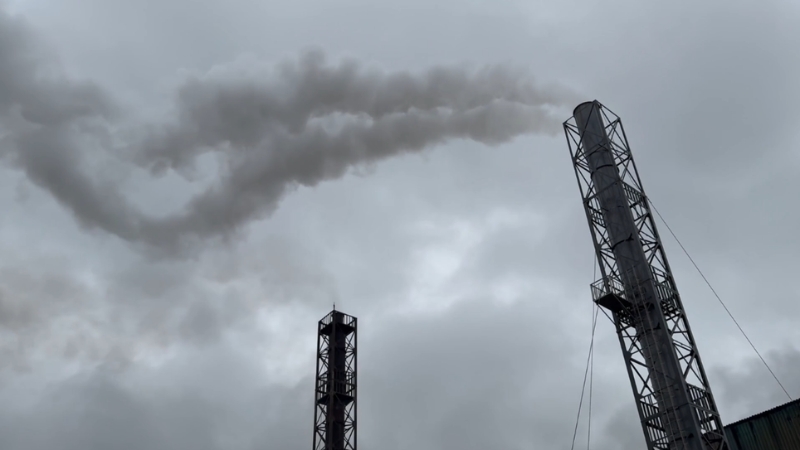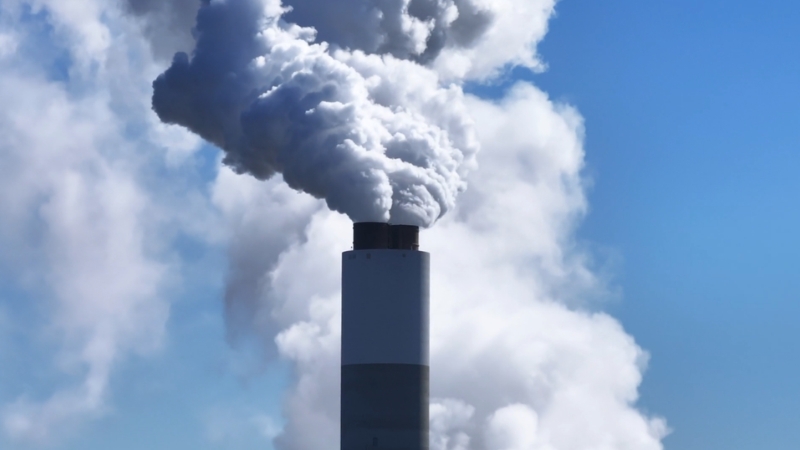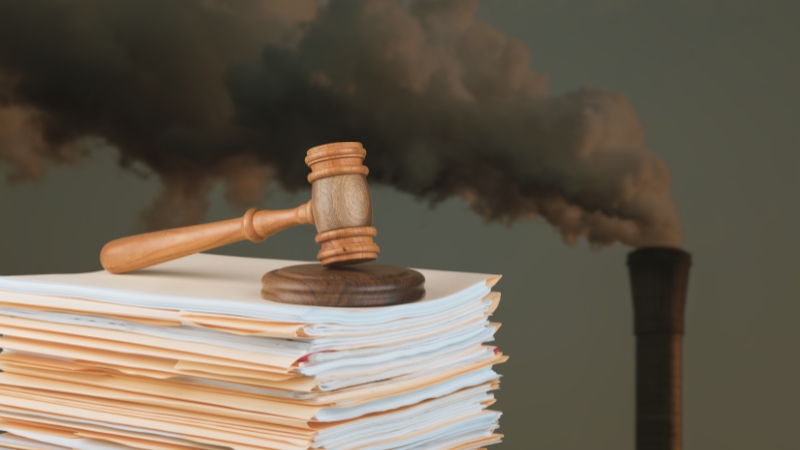The passage of the Foreign Pollution Fee Act of 2025 marks one of the most significant shifts in U.S. trade and environmental law in recent decades. For the first time, the United States will impose a structured fee on certain imported goods based on the carbon emissions generated during their production.
The goal is twofold: to reduce global carbon leakage, where companies shift polluting industries overseas to avoid stricter domestic rules, a nd to create a level playing field for American manufacturers who already face higher environmental compliance costs.
This law reflects growing international momentum around carbon border adjustment mechanisms (CBAMs). The European Union introduced a similar system in 2023, and Canada and Japan are considering parallel frameworks.
By aligning with these initiatives, the U.S. is signaling its intention to integrate climate goals more directly into trade policy.
Why the Act Was Introduced
Several overlapping economic and environmental factors drove lawmakers to pass the Act. The U.S. has reduced domestic carbon emissions by nearly 15% since 2005, largely through cleaner power generation and efficiency standards. Yet during the same period, imports of carbon-intensive goods, such as steel, aluminum, and cement, have increased.
This created a paradox: while U.S. industries bore the costs of stricter regulations, global emissions were not falling as fast because production simply shifted overseas. The Foreign Pollution Fee Act is designed to close this gap by applying a fee at the border that reflects the emissions footprint of imported goods.
| Factor | U.S. Situation Pre-2025 | Policy Gap the Act Aims to Address |
| Domestic Emissions | Down 15% since 2005 | Gains offset by rising imports of carbon-intensive goods |
| Manufacturing Competitiveness | U.S. firms face higher compliance costs | Foreign producers undercut prices without similar rules |
| Trade Balance | High reliance on imported steel, aluminum, and cement | Weakens incentives to decarbonize globally |
| Climate Leadership | The EU is already implementing CBAM | U.S. risked lagging in trade-linked climate policy |
Scope of the Foreign Pollution Fee

The Act does not apply universally to all imports. Instead, it targets industries with the highest carbon footprints and the greatest competitive impact.
In its first phase, the law applies to steel, aluminum, cement, and certain chemical products. Over time, additional goods, such as fertilizers, glass, and possibly even electricity imports from Canada and Mexico, may be included.
Fees are calculated based on the estimated carbon intensity of each product, benchmarked against U.S. industry standards. If a foreign producer can prove that its emissions are lower than the default benchmark, it may qualify for a reduced fee.
| Sector | Default Fee (per metric ton CO₂e above U.S. benchmark) | Key Imports Affected |
| Steel | $50 | Imports from China, India, and Turkey |
| Aluminum | $45 | Imports from the Middle East, Russia, and South America |
| Cement | $60 | Imports from Asia and Latin America |
| Chemicals | $40 | Imports from global petrochemical hubs |
This approach rewards cleaner foreign producers while penalizing high-pollution supply chains.
Enforcement and Compliance Mechanisms
One of the most notable aspects of the Act is its emphasis on enforcement. Unlike past environmental trade rules that were lightly monitored, the Foreign Pollution Fee Act builds in substantial oversight and penalty structures.
Customs and Border Protection (CBP) will administer fee collection, while the Environmental Protection Agency (EPA) and the Department of Energy (DOE) will provide emissions benchmarks.
Importers must submit verified emissions reports or pay fees based on default assumptions.
If an importer fails to provide adequate documentation, higher default fees apply. Repeat violations may result in financial penalties or even import restrictions for persistent non-compliance.
| Enforcement Tool | Responsible Agency | Practical Effect |
| Fee Collection | CBP | Applied at border entry points |
| Emissions Benchmarking | EPA & DOE | Establish industry-specific carbon intensity standards |
| Audits & Verification | EPA | Randomized audits to ensure accuracy of emissions data |
| Penalties | CBP & DOJ | Financial fines, possible import bans |
Economic Implications for U.S. Businesses

For U.S. manufacturers, the Act is expected to provide a competitive advantage. Domestic producers in industries like steel and cement have long argued that they cannot compete with imports from countries with weaker environmental standards. By pricing in pollution, the Act narrows that gap.
The economic effects will vary by sector. Energy-intensive manufacturers may face slightly higher input costs if they rely heavily on imports.
At the same time, industries that already produce cleanly could see export opportunities expand as the U.S. aligns with European and global CBAM systems.
| Impact Area | Likely Effect |
| Domestic Manufacturers | Stronger competitive footing, reduced undercutting |
| Import-Heavy Industries | Higher costs unless suppliers prove lower emissions |
| Consumers | Modest price increases on imported goods, especially cement and steel |
| Global Supply Chains | Pressure on foreign producers to decarbonize production |
Environmental and Global Trade Implications
View this post on Instagram
From a climate perspective, the Act is intended to reduce carbon leakage. By making polluting imports more expensive, the U.S. hopes to discourage companies from shifting dirty production abroad.
Over time, this could push trading partners to adopt cleaner practices to remain competitive in the U.S. market.
Internationally, the Act may face World Trade Organization (WTO) challenges. Some countries may argue that it constitutes a trade barrier. However, lawmakers structured the law to mirror environmental exceptions in WTO rules, similar to the EU’s CBAM.
This alignment increases the chances that the U.S. can defend the policy if challenged.
Challenges and Criticisms
Despite its goals, the Foreign Pollution Fee Act faces several hurdles. Critics argue that it may:
- Raise consumer prices at a time when inflation remains a concern.
- A disadvantage of small importers is that they lack the resources to track emissions data.
- Provoke trade disputes with major partners such as China, India, and Brazil.
Proponents counter that these challenges are outweighed by long-term benefits: stronger U.S. industry, cleaner global production, and reduced greenhouse gas emissions.
Conclusion
The Foreign Pollution Fee Act incentivizes emissions reductions by imposing fees on dirty imports from high-emission countries like China. This lowers global emissions, boosts jobs, fosters innovation, bolsters supply-chain security & ensures fair competition for US businesses.
— U.S. Senator Bill Cassidy, M.D. (@SenBillCassidy) April 29, 2024
The Foreign Pollution Fee Act of 2025 is more than just an environmental regulation; it is a trade and industrial policy designed to align economic competitiveness with climate responsibility.
By combining strict enforcement, targeted fees, and international alignment, the Act creates new incentives for cleaner production both at home and abroad.
For U.S. manufacturers, it promises relief from unfair competition. For foreign producers, it sends a clear message: if you want access to the U.S. market, your goods must meet higher environmental standards.
In cases where violations occur, businesses can also explore how to legally sue a foreign seller that ships to the U.S., reinforcing accountability under existing trade and consumer protection laws.
The coming years will determine how smoothly the policy is enforced and whether it sparks innovation or resistance in global trade.

